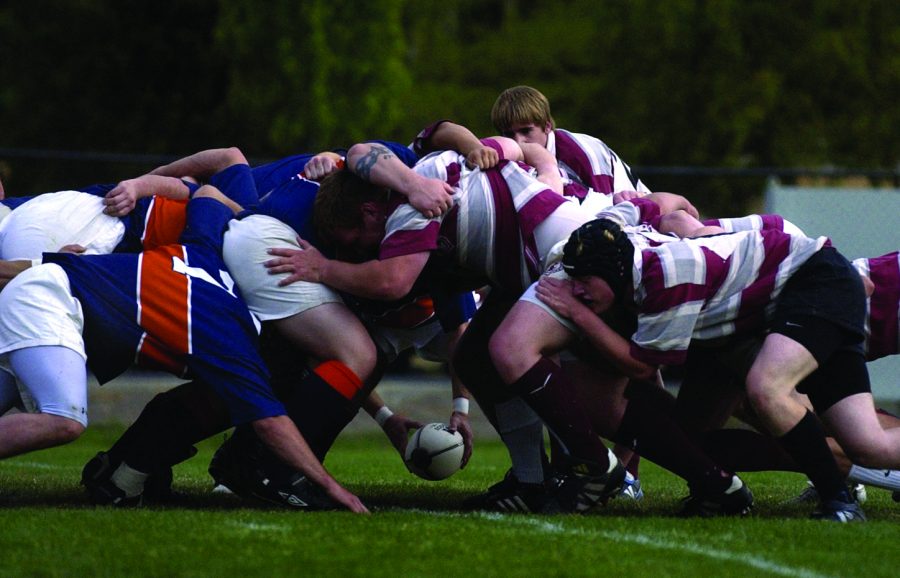Football can look toward rugby for safety
Sport has a dangerous dependence on padding which results in more head-to-head collisions
HARVEY DOTY | DAILY EVERGREEN FILE
WSU men’s rugby club faces off against St. Andrews University in a scrum. Players often go with minimal or without head protection.
July 19, 2018
The condition of football players has been under contention for years, but not in terms of physical fitness. Instead, the problem lies with the abundance of concussions and the long-term effects that come with them.
In 2016 alone, concussion injuries increased by 58 percent, according to ESPN.com. This year the NFL is once again changing the way they approach this diagnosis, including increased medical staff on the field during games to identify injuries as they occur. Despite this, many players have been known to return to play despite concussion protocol and teams have been fined for failing to bench the player at risk.
Even with these changes, we still see issues that affect the players long-term. Tyler Hilinski was the latest victim when an autopsy revealed he had chronic traumatic encephalopathy¸ a degenerative brain disease, at his death.
Though it is a factor, the problem I see isn’t so much in the level of care but in how the sport itself is played.
This is where we should turn to the sport across the pond known for its own breed of contact sport — rugby.
Amber Stotts, a member of the WSU women’s rugby club team, said that football is known for its dependence on padding.
“You see people leading with their heads a lot more and also a lot more grabbing than actually blocking,” Stotts said. “In rugby, there isn’t that dependence because all we have is a mouth guard, sometimes a scrum cap for some head protection and occasionally you’ll meet someone with joint issues that will use like a shock shirt or padded compression shorts, but those aren’t common.”
Stotts said that the difference is not only in the padding, but also in the way the football players tackle.
“There is a different style of tackle used in football, where it tends to be in a higher body position and trying to stop their forward motion, she said. “While in rugby it’s using the opponent’s momentum to carry them down. It’s a lot like the motion of a take-down in wrestling.”
Stotts said she has had only one concussion in her seven years of play.
“Concussions are very serious deals in every sport but especially in [rugby] where there isn’t head protection,” she said. “Coaches are trained to be aware of concussions symptoms and players generally have to be checked by a medical professional and be cleared for return.”
Rugby tackling has been noticed. Boise State University hired three former rugby coaches to help their players perfect the safety of their tackling technique.
While it’s true we can’t count rugby as the safest game on the planet, where spinal injuries from scrums and untrained players cause problems statistically, we can still look to it to modify football to where our players can be much safer.
We don’t have to imitate rugby completely, but we can afford to learn from it.










